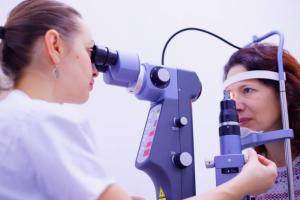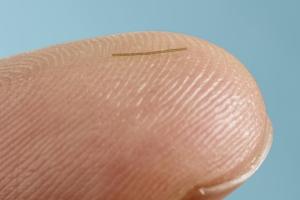Eye drops, used in the treatment of glaucoma work by reducing the intraocular pressure (IOP) within your eyes. Increased eye pressure is a major risk factor for optic nerve damage.
Eye drops are the most common form of treatment for glaucoma. Since glaucoma often has no symptoms, people may be tempted to stop taking, or may forget to take their medication/eye drops. It is important that you follow your treatment plan and appointments, as recommended by your eye care practitioner. This is because glaucoma is a life-long, often progressive condition, and appropriate treatment can prevent vision loss.
Eye drops work in two ways to reduce eye pressure:
- They reduce the amount of aqueous fluid secreted into the eye, or
- Help increase the outflow of aqueous fluid from the drainage angle.
Approximately one half of patients don’t take their glaucoma medication as prescribed, increasing the amount of visual loss caused by glaucoma.
- Before instilling your eye dropsShow lessShow more
- Always check the label on your eye drop container before instilling your drops. Make sure they have not expired.
- Make sure you have the correct eye drop and it is the correct time of day to instil it.
- If you wear contact lenses — remove them at least 15 minutes beforehand. You can then replace your contact lenses 15 minutes after the drops have been instilled.
- Keep handy a couple of clean tissues.
- Wash your hands. Carefully remove the cap of the eye drop container, ensuring the tip of the container doesn’t touch anything to reduce risk of contamination and infection. Place the cap on a clean tissue.
- Instilling eye drops step-by-stepShow lessShow more
You can choose to carry out the next steps standing up, sitting down or lying down.
Note: Most people find it more difficult standing up.- Tilt your head slightly back. Gently pull down the lower eyelid to form a pocket (or pouch).
- With the other hand, hold the bottle upside down above the eye – aiming for the pocket created by the lower lid. You may want to rest that hand on your forehead to keep your hand steady.
- Gently squeeze the container. Try to allow only one drop to fall onto the inside of the lower eyelid.
- Gently release the lower lid and close your eye.
- Press the tip of your finger against the inside corner of the closed eye, applying gentle pressure over the drainage canal opening and hold for at least two minutes to stop the eye drops from draining down to the nose and throat.
- Gently wipe off any excess medication that may have spilt onto your face with a clean tissue.
- Repeat steps 1 to 6 if you need to instil an eye drop in the opposite eye.
- If you have a number of different eye drops to administer, leave at least 5 minutes between each different drop.
- What can I do to make sure my eye drops work effectively?Show lessShow more
- It is very important to use your eye drops every day as instructed by your eye care practitioner.
- Try to use your eye drops at the same time each day. Set an alarm on your smart phone or watch to remind yourself to instil your drops at the correct times each day.
- Make sure the eye drops are instilled in the correct eye.
- Only administer one drop at a time.
- If you miss a dose of your eye drops, use it as soon as you remember.
- DO NOT instil extra drops to make up for the missing dose.
- Remember to get a new script for your eye drops if you know you are about to run out of the current ones. Your GP can also prescribe the drops for you if you don't have an appointment with your ophthalmologist.
- If you have difficulty instilling your eye drops, consider asking someone else to instil them for you. Or contact Glaucoma Australia to check if there is a Dose Administration Aid available to assist you.
- Side effectsShow lessShow more
Glaucoma eye drops, like any other prescription medication can have side effects. You may have some side effects or none at all. It is advised that you speak to your eye care professional if you experience one or more of the following:
- Eyes appear red, itchy, watery or swollen.
- Pupil seems to be large/dilated.
- Headaches or pain above the brows.
- Dry mouth.
- Feeling tired, weak or dizzy.
- Feeling nervous or depressed.
- Difficulty breathing.
- Difficulty noticing low blood sugar symptoms if you are Diabetic.
- Slower or faster heart rate.
- Light sensitivity.
- Changes in taste of food and drinks.
- A skin rash especially if allergy to sulfa drugs.
- A permanent change in eye colour.
- Eyes appearing to be sinking in their sockets creating appearance of deep set eyes.
- It is normal to have some stinging or burning sensation, blurry vision or watery eyes immediately after using eye drops. Speak to your doctor if these symptoms are lasting longer than expected.
- Safety measuresShow lessShow more
- Do not adjust the frequency and/or the number of eye drops you have been prescribed without consulting your eye care practitioner.
- Never allow another person to use your eye drops and do not use anyone else’s drops.
- Keep eye drops out of the reach of children.
- Keep the tip of the bottle clean to avoid risk of any infection.
- Ensure you discard the eye drop container and contents after the recommended use-by-date.
- Never miss a scheduled appointment with your eye care professional.
- Always contact your GP, optometrist or ophthalmologist if you think you are experiencing any side effects from your eye drops.
- Always store your eye drops in a cool place. The drop bottles do not actually require refrigeration while in use, but should be kept in away from hot areas of the house and not left in the car.
- IOP medications available in AustraliaShow lessShow more
IOP-Medications-available-in-Australia.pdf
This resource provided by Optometry Australia. It outlines the range of intraocular pressure (IOP) medications accessible to optometrists and healthcare professionals within Australia.
Keeping your eye drops at the right temperature when travelling can be a problem. The good news is the FRIO cooling wallet will keep your eye drops below 26 degrees celsius for 40+ hours without refrigeration, simply activate with cold water. The wallets are light, compact, re-usable and come in four sizes. Order online or call 1800 500 880



